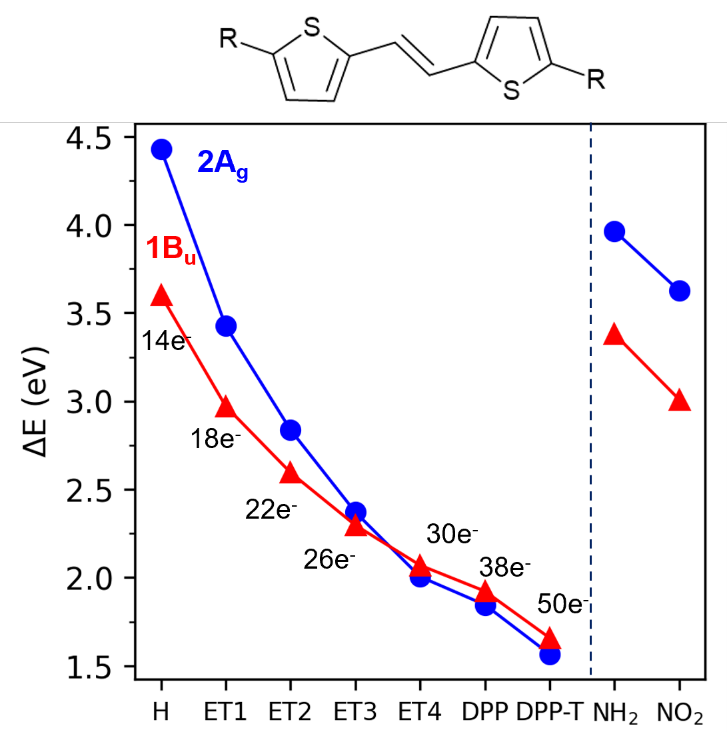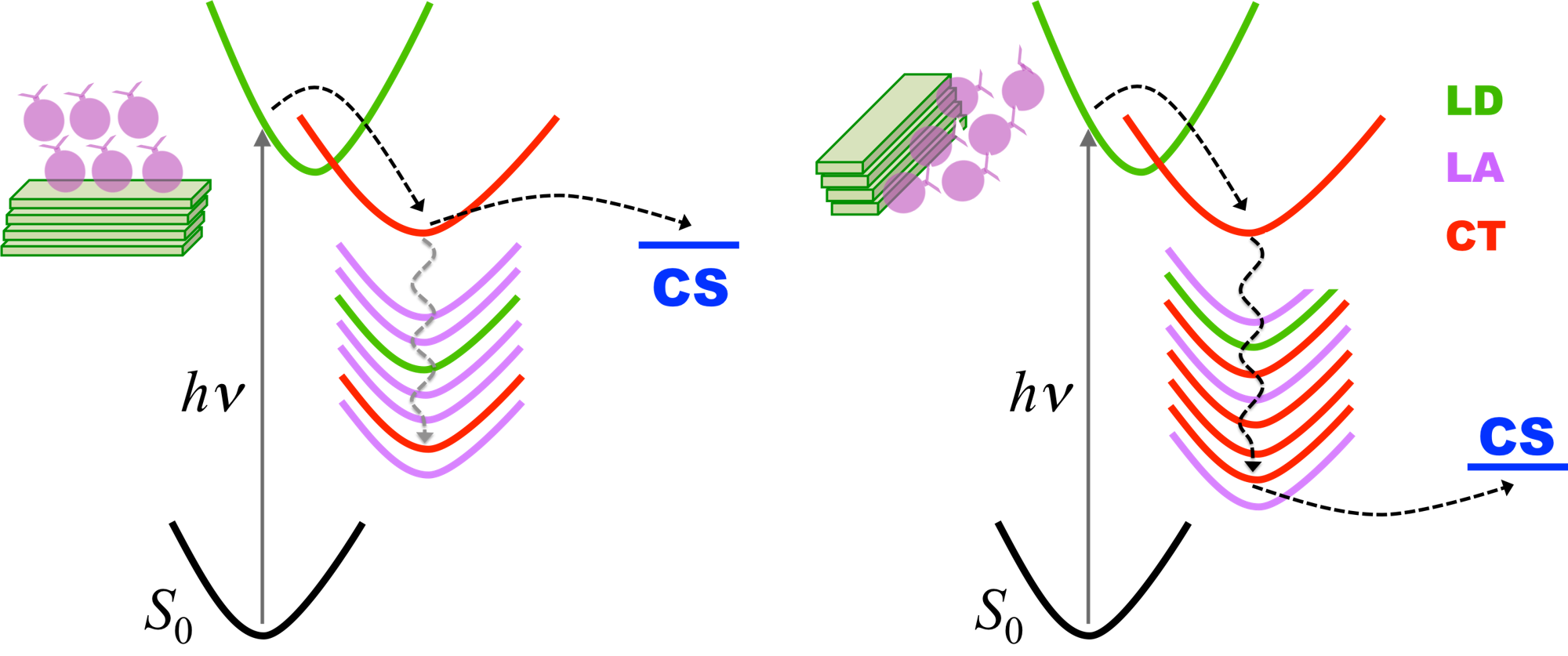Theory helps to rationalize complex photophysical phenomena in spiro-bridged heterotriangulenes.
By Pavlo O. Dral [1]
In brief:
- We investigate the impact of the central heteroatom on structural, electronic, and spectroscopic properties of a series of heterotriangulenes and their aggregates.
- The work is based on synthesis and in‐depth analysis by NMR spectroscopy, X‐ray crystallography, steady-state and time-resolved spectroscopies, scanning electron microscopy, and computational chemistry calculations.
In a recent paper, we reported joined experimental and theoretical investigations of structural, electronic, and spectroscopic properties of a series of spirofluorene-bridged heterotriangulenes and their aggregates [2]. The work is the result of the collaboration between the experimental groups of Dirk M. Guldi and Milan Kivala, and the computational groups of Pavlo O. Dral and Mario Barbatti.

The crucial questions we wanted to address is what is the impact of the central heteroatom on the electronic excitations and why all these compounds have very different photophysical behavior despite sharing the same structural motifs. To answer them, we split the system into units (shown with different colors at the figure) and analyzed the one-electron transition density matrix between excited and ground states (Felix Plasser‘s TheoDORE package was very helpful for this – highly recommended!). Our theoretical calculations showed that:
- For the compound with an N-central unit, the lowest-energy absorption is localized on the N-triangulene core. The emission also originates from this core.
- For the compound with a P-central unit, the lowest-energy absorption is localized on the spirofluorene units. This compound features interesting dual emission not observed in other compounds: one from fluorene and another (lower energy) from the P-triangulene core.
- For the compound with a P=O-central unit, the lowest-energy absorption is localized on spirofluorene units. Emission originates from these units too.
Another intriguing observation was that aggregation of these compounds can be induced by adding water to their solutions and, during aggregation, the fluorescence quenched. The theory explained the quenching in P- and P=O-containing compounds with indirect calculations on fluorene dimers (since emission originates from fluorene units in these compounds), which are much weaker fluorescent than fluorene monomers. Apparently, more contacts between fluorene units in aggregates are responsible for quenching in phosphorus-containing spirofluorene-bridged triangulenes.
We also explained the unusual configuration of phosphorus-containing spiro-compound dimers with anti-parallel dipole moments in solid-state (see the figure below). The dispersion interaction between fluorene units is so strong that it forces dimers to adopt this configuration even in the gas phase, while the alternative configuration is unstable. This conclusion followed from calculations in the gas phase with dispersion interactions included for both configurations.

Finally, the theory also explained the trends in NMR spectra of compounds with N, P, and P=O central units as we could quantify their inductive and mesomeric effects.
All these observations obtained with state-of-the-art theoretical analysis would be rather difficult (if possible at all) to rationalize with pure experimental techniques, which highlights how important quantum chemistry is in modern science.
Raw computational data including geometries in xyz format in individual files can be downloaded from figshare.
Pavlo O. Dral
References
[1] This text has been adapted from a blog post published at Pavlo O. Dral’s website on June 2, 2020. I thank Pavlo for permission to reproduce it here.
[2] M. Krug, M. Wagner, T. A. Schaub, W.-S. Zhang, C. M. Schüßlbauer, J. D. R. Ascherl, P. M. Münich, R. R. Schröder, F. Gröhn, P. O. Dral, M. Barbatti, D. M. Guldi, M. Kivala, The Impact of Aggregation on the Photophysics of Spiro-bridged Heterotriangulenes SMASH. Angew. Chem. Int. Ed. 2020. DOI: 10.1002/anie.202003504


